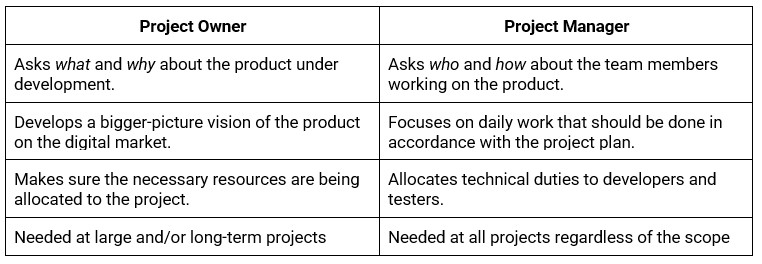
Proper software development project management requires effective communication, mutual trust, and a close partnership. As such, the project manager should be where most of the team is.
Project management is a vital part of software development that serves as a map guiding the programming team through all the tasks and operations to implement during the actual project course. Despite the fact the majority of digital product owners (or owners to be) understand and accept the idea of outsourced software development, distant management of such projects is still sometimes found questionable.
So, where should your project manager be located: in-house right next to you or nearby the development team, even if it means overseas? This post is aiming to find the answer.
What does the project manager do?
Project management is a complicated process that includes many different activities, phases, and tools to use when working. Generally speaking, a project manager (PM) serves as a middleman between the development team and the client. For some projects, there might be a need to add another role titled project owner, which is also discussed in the subsequent section of today’s post.
With software development outsourcing, when you and your team are distant from each other, accurate and responsive project management becomes your only way to keep the development process smooth and, in a good way, predictable. Understanding all the duties and responsibilities of a project manager is key to deciding where it’s better to locate one, in a headquarters or distant R&D office. Here’s what you should expect a project manager to do when working on your software product:
- Communicate closely with the development, design, and testing teams to ensure the tasks are being implemented according to the project plan
- Proactively track project course to discover any changes, difficulties, or occurring risks as early as possible and mitigate them as needed
- Assure the team’s adherence to the chosen software development methodology (run daily meetings and retrospectives, etc.)
- Maintain all the documents related to the project concise, informative, and understandable, including by involving software engineers in the documenting process
- Engage with the project owner and stakeholders acting as a point of communication between the R&D team and top management staff
- Make sure the project’s budget fully corresponds to the planned workload and gets quickly adjusted to the changes in the project scope
- Act as a delivery lead, providing the expected results of work on time and within the agreed budget frames.
As you can see from the list, almost every responsibility of a project manager relates closely to communication, especially with software engineering and testing teams. Of course, regular meetings with stakeholders are also an important part of PM duties, but reporting the information is a lot faster than gathering it. Add to this an obstacle of a project manager working miles away from developers, and you’ll get serious trouble tracking the project’s progress. This particular role is only effective if there’s a high level of trust between the manager and the team. An ongoing exchange of information, nonverbal and emotional included, is an important factor in establishing such a level of trust. Reasonably, this is way easier to achieve if PM works nearby the team and does that on a long-term basis.
“Managing developers is both an empathic and culturally affected job. So it’s important to have a manager close to the team. Removing roadblocks and impediments while understanding precisely what struggles the team is facing right now is a key to high productivity. It’s possible to manage developers from the outside by setting objectives, but lack of clear communication will backfire.”
Alex Gostev, Agile Coach at QArea
Project owner vs. project manager: Roles compared
Although the project owner role frequently appears in software development projects, many continue to confuse it with the project manager position. Well, these are not the same; therefore, they should not be used interchangeably.
A project owner (PO) is a person who brings vision to the project and makes sure it aligns well with the long-term goals stakeholders have regarding it. Unlike the project manager, who is mostly occupied with internal communication with the team and their day-to-day tasks, the project owner works closely with the project sponsors, stakeholders, and directors. Traditionally, POs are in charge of the project’s business unit, its market fit, and the overall success of the release. Aspects like business analysis, future product’s mission and vision, market penetration strategy, financing, and returns on sponsors’ investments also belong to the project owner’s responsibilities.

It is important to note that not every single digital project requires a project owner role fulfilled. It is absolutely essential for very large projects to have a PO, relatively necessary for medium-scope ones and could be even too extra for small or very short-term software projects. This is the key difference between the owner and manager positions: the last one is required at any type and size of a software project. The thing is, even the smallest projects developed by two or three people can fall apart without proper coordination, so we definitely would not recommend omitting PM from the team.
Summing up
No software project can be accomplished without a proper project management process. In that context, proper would mean effective communication, mutual trust, and close partnership. That proves the project manager should be where most of the team is. As software development companies that provide outsourcing and staff augmentation services continue to evolve, most of them nowadays offer competent management as a part of every project they run.



























